Personal Blogs

Some decades ago on Blue Peter the inveterate multi-talented Roy Castle set a Guinness Book of Records by playing the same tune on 43 different instruments in four minutes.
Sometimes I feel that being a Learning Technologist is like this. We an not IT support, nor are we Teachers or Tutors, but we can 'play' a multitude of platforms with aplomb - and fix an IT, psychological or learning problem to boot.
Introduced to a fledgling PebblePad while completing my MA ODE with the OU 2010-2013 I have now had it sprung on me, in all places, as a Swim England Swimming Coach. It is this e-portfolio, evidence gathering, assessment supporting platform that will be used to assess whether I merit certification as a coach.
Interestingly, it was mentioned to me the other day, that a tutor was using PebblePad at our college for a similar purpose: I shall have to investigate further. So far I have found it more common for tutors to use a blog, typically WordPress though some using Blogger.
My own ensemble of tools that I use, and some that I have mastered include:
Google Classroom
OpenAthens
Turnitin
Planet E-Stream
ThingLink
WordPress
I have also mastered the use of a 360 Ricoh Theta SC camera - at least for taking stills.
Adobe Lightroom
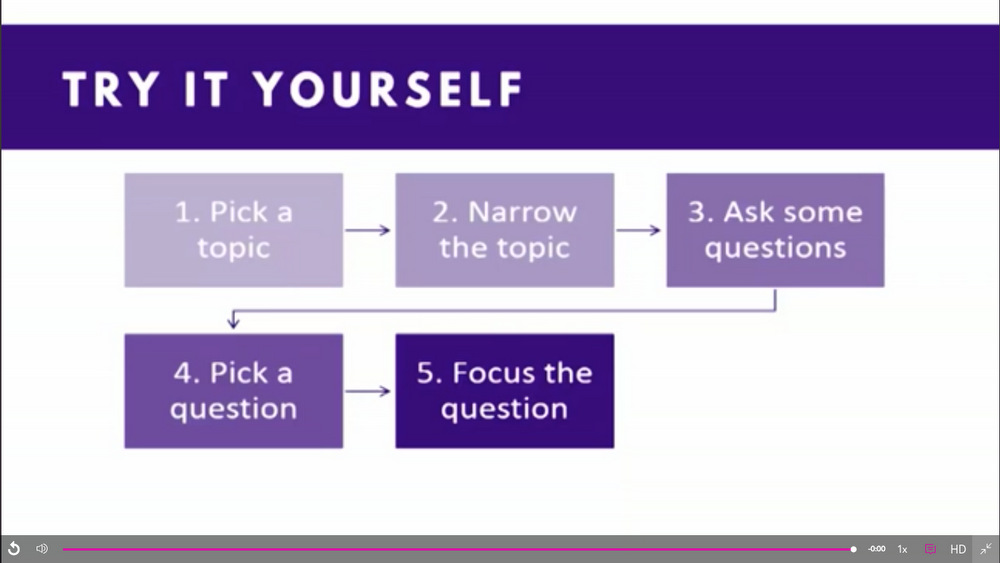
This from FutureLearn @OpenLearn
Between giving presentations to staff and tutors on the opportunities presented by the educational video platform Planet E-Stream I am also applying for funding to develop the relationship between students and teachers (tutors). This is made easier because of a pool of projects that are bubbling up across the various different faculties and workshops where I act as a 'Learning Technologist'.
This is no academic post that might be reflected by my having an MA in Open & Distance Education, rather it is somewhere between being a Librarian, IT Person and Learning Support. I am confident that this is a role that will either be absorbed by teachers during teacher training or through practice, or it will blossom, depending on the institution into something more akin to a consultant or adviser. I am having to draw on raw technical skills to use new and popular platforms, but also to integrate digital into a course as an Instructional Designer would do.
The timing of putting in our application comes right at the moment when I complete two FutureLearn MOOCs from Open Learn at the Open University: The Online Educator and Blended Learning Essentials.
With my inability to let go of academic study, research and writing up papers seems a sensible way forward. This may be combined with completing an MEd with the OU if they can be convinced to allow me 60 credits from the two additional modules I took having completed the MA ODE in 2013. This would still require me to take a further 120 units, to two hefty and possibly one substantial and two shorter modules. I feel I am now where I needed to be in 2010 - working in the front line in education, an intermediary between students, teaching and other staff, moving through multiple departments across a number of sites - I even have a toe in mark.
Preferring a busy life, apparently, over the next four weeks I will be assessed to qualify with the Institute of Swimming as a Swimming Coach. I have been teaching for 16 years and coaching for 10, so this is a case of providing evidence of my knowledge rather than having to take part in formal class or poolside learning. Being who I am, I have of course kept a learning journal, or career journal as a swimming teacher and coach which is called simply 'Swim Coach Blog'.
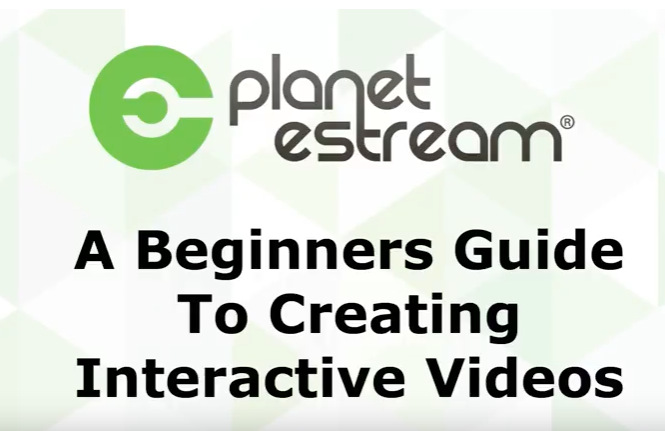
Having attended a couple of promotional sessions on how to use Planet eStream I see here an opportunity to create the kind of interactive video learning that until recently was only possible at a bespoke level to 'Industry'. I was involved in interactive learning in the 1990s.
Having got on top of VR tours, hotspots and teleporting with ThingLink, the next goal is to create some interactive Telly.
A month of this and LingVist is the App for me.
The challenge is a simple one. To know over 5,000 words in French.
With the set up test I came out at 735. I am already at 1600 as a spend between 40 - 60 mins a day 'filling in the gap' in sentences. This is SpacedEd of 2010 to perfection. Early on a word I do not get is repeated more often until I get it. All words, though to a diminishing amount, are repeated. Over time words are learnt, in the context of a number of different sentences.
I am starting to see patterns too that my own thinking has constructed rather than things I have been told.
It works. Or at least I hope so.
I bias it towards the tougher challenge of writing the word - you can use voice recognition. My relative fluency in spoken French means that I'd get a lot more right. Often I can say the word, but cannot spell it. I want fluency in both spoken and written French.
There is more to it, than simply being forever tested on word knowledge in a compelling game-like user experience. There are challenges, and grammar as well, There are analytics so you can monitor to you progress and the easy pleasure of achieving 20 new words learnt per day.
I have gotten tired of Tandem. Here you are meant to use the power of social to team up with someone who is native in the language you want to learnt. We are supposed to help each other. Though I have had a few pleasant and valuable experiences I have found that no one has lasted. I have also found a number of people whose English is so bad to be unintelligible so there is nothing I can do to correct it.
Busuu is more like Rosetta Stone. There are too many choices around themes to study and it is all far too simplistic - tourist French.,
The pattern used by these platforms would work for all kinds of things though where a new 'language' has to be learnt, from medicine to stage work, carpentry to engineering.

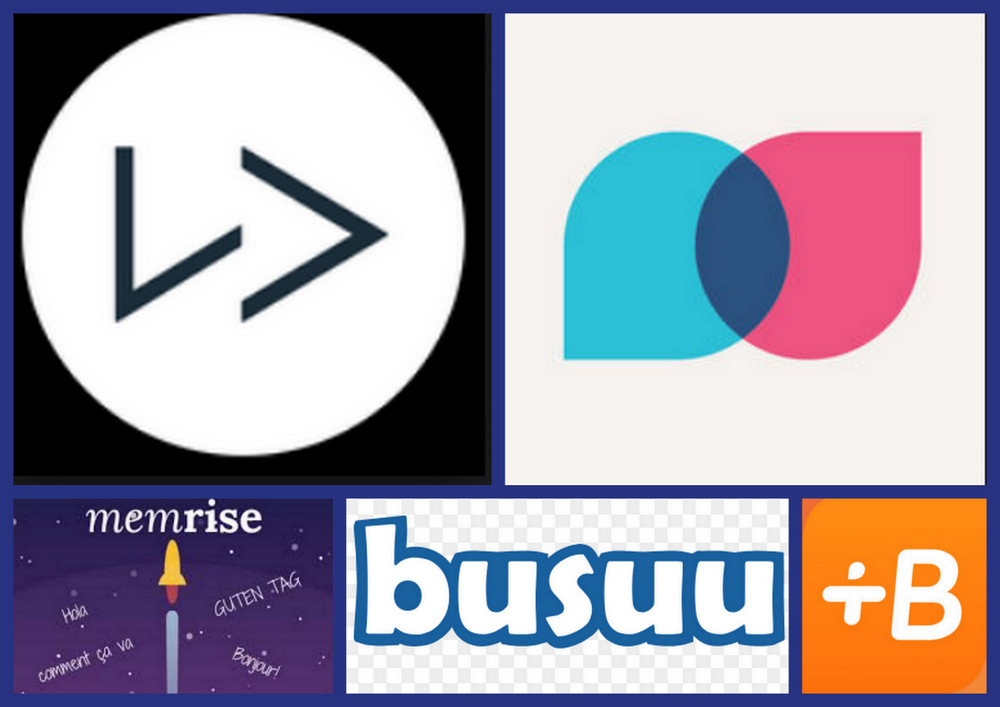
On a whim, and as homework before our French group which meets once every two weeks, I decided to try out several popular language learning Apps. I've used Rosetta Stone on and off for years. I tried:
Lingvist
Busuu
Memerist
Babbel
TinyCards
Tandem
It was revealing how many have leapfrogged Rosetta stone and offer a smarter and sometimes social platform.
Lingvist and Babbel did a tough test to establish my level of understanding. There is nothing more important than understanding how much a student already knows before you start to teach them. Both were effective in differentiating me from my wife. My wife was taught in a French speaking school in Montreal age 13 and a decade later learnt French at the British Institute in France. My French learning never got beyond a C grade at O' Level and a failed attempt to do an Open University degree (which taught French at an unbelievably basic level, but which I found tedious).
Lingvist and Babbel used different measures. Lingvist produced a guestimate at the number of words we each knew of the 5,000+ it was teaching. I got a 753, my wife 3,200. Babbel produced a similar differentiating. Like Rosetta Stone these Apps repeat phrases that you must then in part correct or add to. I liked that there is equal requirement to use the written word as this is where I am weakest. It is handy that my iPad has predictive text in French.
Tandem hooks you up with someone who wants to learn the languages you know and can teach. It works like a dating App, but is adamant that it is not. I had 30 mins talking to someone in Marseilles and about 5 minutes talking to someone in Rouen. Both proved successful as we could correct each other's written words.
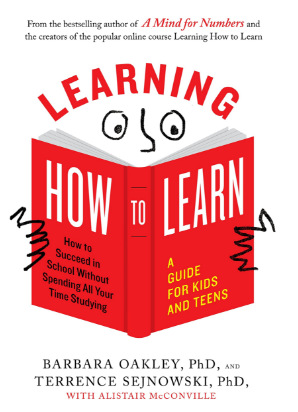
For tweens and teens.
A simplified digest of Barbara Oakley's incredible MOOC on Coursera 'Learning How To Learn'. The last time I looked this had had over 1.4 million students.
Having done this MOOC myself I later signed up to be a mentor. This is mostly meet and greet rather than teaching support. We help keep people going.
I recommend 'How to Learn' as a great introduction to the topic before tackling the material aimed at undergrads and post-grads. I simply find this a great way to refresh my knowledge.
I’m not doing a PGCE but I am doing all the reading as if I were. Taking a Masters in education does appear somewhat forward having not gained a PGCE or taught, however close to learning I may have been throughout my career.
Much of what Geoff Petty can teach me in his seminal books is familiar.
The need for clarity of purpose
The need for planning
This is because for VR to be adopted I need to reverse-engineer it. To understand the problem for which such a tour is the solution.
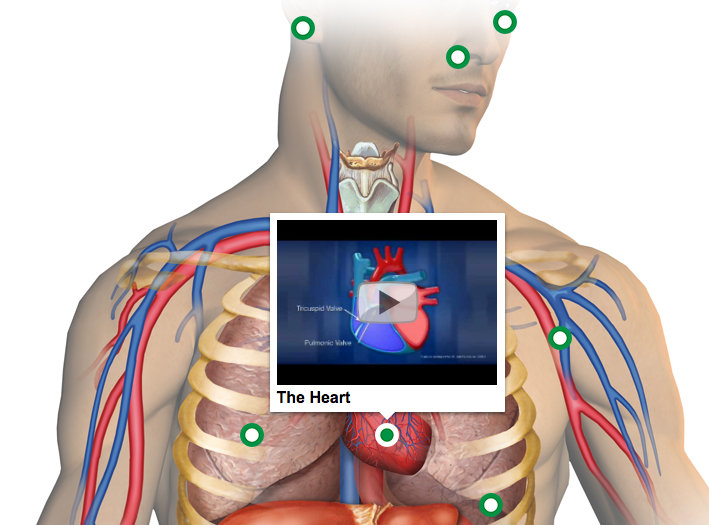
These interactive images look appealing as a learning tool. They pull together a series of short, quirky videos and animations that provide the low down on a collection of human organs. To what end? To some degree a Dorling Kindersley annotated book did this in the past. Stick it on an interactive screen and click on each in front of a class to fill 45 minutes. What is really required as a learning experience is to have students learn the skills to create these themselves, then research and add the links (or to shoot their own pieces). All of the above came from YouTube.
Here's the link: https://www.thinglink.com/scene/880832510185963521
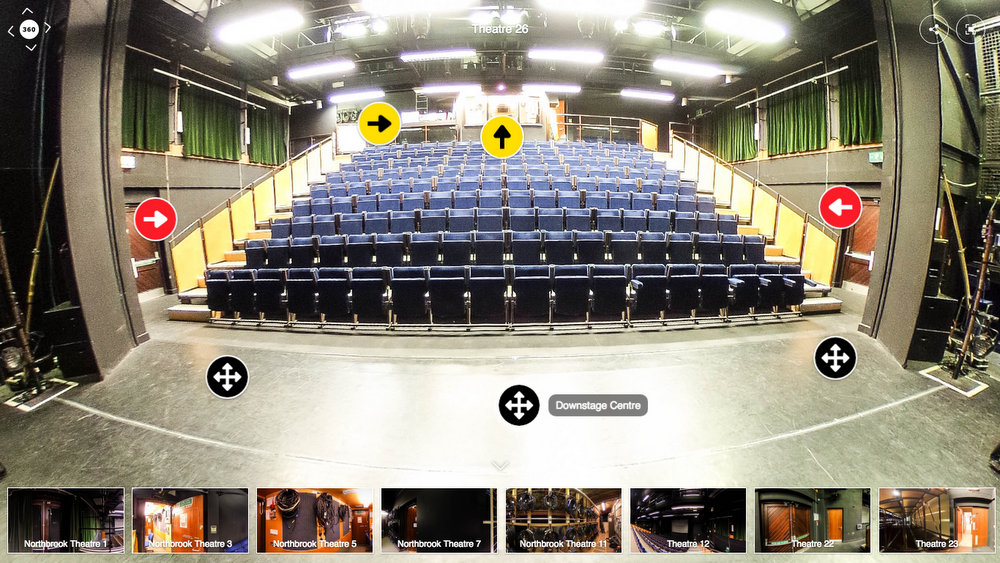
We use ThingLink.
The difference is that I am using 360 images that can be viewed through a VR headset, or desktop or touchscreen.
Here is my ThingLink VR Tour of Northbrook Theatre: https://www.thinglink.com/mediacard/1073243716732321794
I am working with the College team here to create an immersive experience for induction. Do we add multiple hotspots of information, like this Human Body above, and follow this up with a detailed quiz, or do we clone the tour and get students to add the information themselves? Should we give them the skills to use the 360 camera and get them to annotate it? OFSTED would like us to be developing their Digital Skills and using English.
The VR Tours I have so far initiated include:
- An Aeronautics Workshop
- Two Motor Vehicle Workshops
- A Hair Salon & Treatment Centre student facility
- A Learning Resource Centre & Library
- A Carpentry Workshop
- An End of Year Fine Arts & 3D show
- A Creative Industries Theatre Props & Set Dressing Show
- A Theatre
To get the education right I need to go back through some of the MAODE modules I did, for example, H818 'The Networked Practitioner'.
With my MA in British History of the First World War complete (the dissertation went off on 9 July) I am seriously contemplating the next piece of learning which includes adding to two 30 credit 'spare' modules I did having completed the MAODE in 2013 that I could potentially build into an MEd.
That or hunker down and specialise on Augmented Reality & Virtual Reality in learning.

This is all too OU. Though the days of 'leisure learners' gaining multiple degrees was ended with the change to tuition fees a few years ago. I recall at my graduation the compare would announce from time to time that someone collecting their degree was on number three, or even number five.
I only have one MA, the MAODE from the OU. Although I should by now have a BA in French, and could have studied history with the OU, rather than with the Universities of Birmingham and then Wolverhampton.
I hanker after and expect the OU way of learning - with everything online, or at least considerable, intelligent online support in a blended version. Studying first at Birmingham and then Wolverhampton was no better, and often less well supported than my undergraduate degree of 1981-84.
Needless to say, 9 July 2018, marks the culmination of my third Masters Degree.
BA/MA: Geography
MA: Open and Distance Education
MA: British History and the First World War
All I have to do is successfully negotiate the WLV 'Turnitin' system.
All I have to do is read it through by 15,000 words just one more time and try for the eighth of ninth time to get the conclusion right. I am writing about the nature of 'war enthusiasm' during the peak recruiting season into Kitchener's volunteer army in 1914. I have used the normal distribution or 'bell curve' to argue in favour of a spectrum of behaviours from antipathy to jingoistic enthusiasm for enlisting, with the majority either side of a line which had them enlist out of necessity for economic reasons, or had them enlist out of a sense of duty, patriotism and a desire to 'get the job done'.
As the Digital Editor of The Western Front Association website, this MA has, over the four years it has taken (including a two year gap between the universities of Birmingham and Wolverhampton) and a six month extension due to illness, filled my head with enough WWI content to help me with my 'job'. It also gives me some credibility in the WWI community. It will see me writing the occasional article and book review too.
As the void in my academic life opens up I contemplate a PGCE to support my 'blended learning' advocate role, or, as time my be running out, to push for enough further credits through the OU to gain an MEd. I completed two units beyond the MAODE so in theory have 10 to 15 credits (I am unsure how many) towards whatever is required for the MEd. This would spur me to research and write about some of the initiatives I am involved with - not least the use of Augmented Reality (AR) and Virtual Reality (VR) in the classroom.
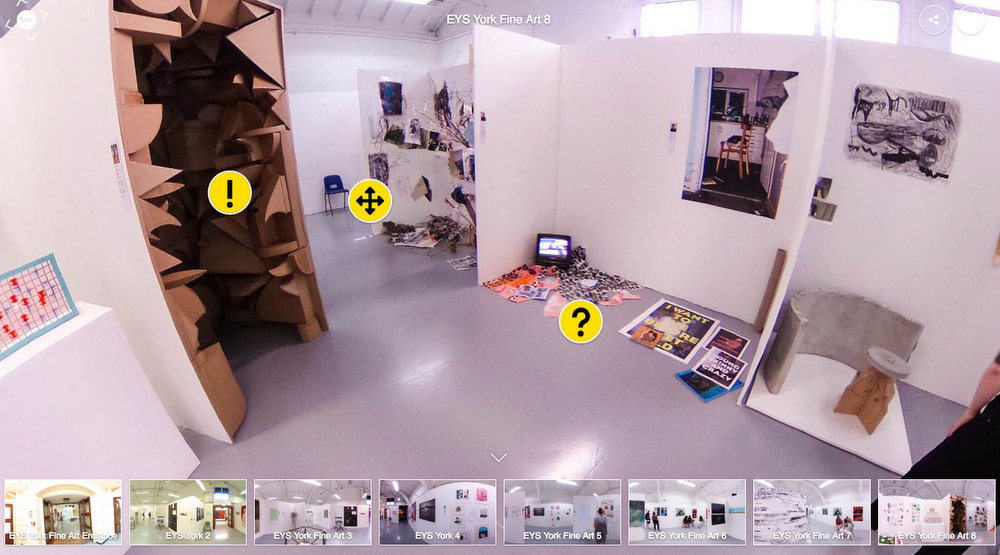
End of Year Fine Art & 3D 2018, York Hall, Greater Brighton Metropolitan College
The first stitch of the images and the magic begins. Choices have to be made over labels, over direction or the words used with each tag. Still testing what can be done already I see the need and value of some deeper planning. If this is to be seen by prospective students and parents then some indication of practice would be helpful - in fact the kind of information shown in the cards on each student: what they studied, where they are going next and a little about their learning experience.
And some gamification: a quest, in which a range of art materials have been placed around the hall to collect, or a quiz, and some video as well as the planned mid and close-up shots.
In brief, it requires a brief. To avoid the criticism of 'so what?' I need to address these questions:
What is the problem?
Who are we speaking to?
What do we want to say?
What do we want them to take away from this message?
I might answer:
Future students and parents don't realise the quality of achievement possible and the paths that this opens up to an arts student.
We are speaking to future students and their parents, rather than celebrating the work of those shown here - who have, after all, made the next step already.
We want to show and say what a wonderful experience it is to be a student at GB MET.
We want them to apply. We want them to feel enlightened and excited about their immediate future.
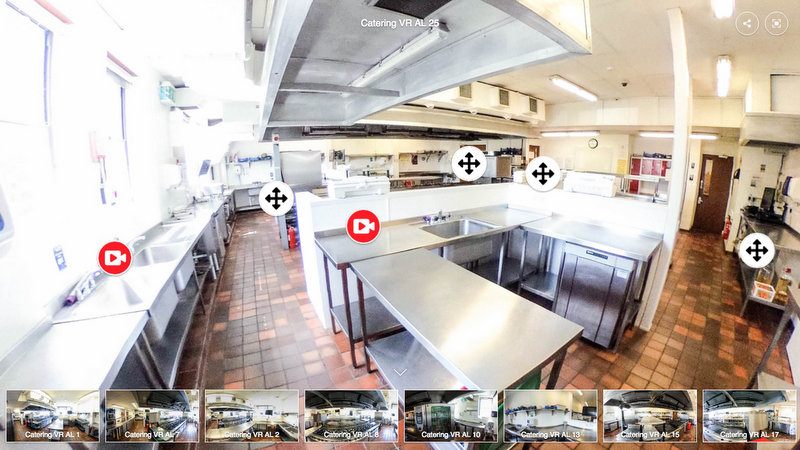
I've long held the view that with so many distractions and alternatives, that without compulsion, however much magic you through at a learning experience, the students will not come. I am a month into a three month 'build' of some 12 VR tours of workshops and facilities at a large, recently merged college. Using a 360 VR camera, as well as stills and video, a series of learning environments are being built in ThingLink.
The 'stage set' as I describe it, the add-ons include induction, health & safety, training and testing. In its simplest form it is a slide show made of 360 images in which the viewer can explore all around the environment. In its more sophisticated form there are sets of well-researched and carefully written learning experiences and activities. The simplest pattern, no different to reading some text and then being asked some questions on it, is to follow up ten minutes of exploring such a world with a quiz.
Marketing have an interest in using these images to show of facilities. In turn I need some marketing in put to promote these kinds of learning experiences. I'd prefer to sell these to students rather than to simply compel them to 'do them' under close supervision of their tutor.
Are you making use of 360?
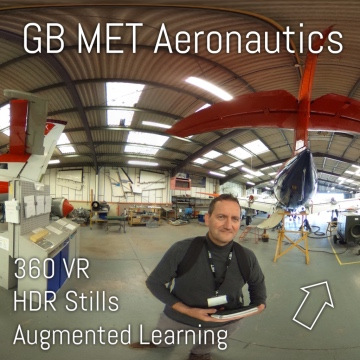
It has taken 8 years. Maybe it has taken 18. I have in one vast loop gone from linear to interactive.
Only in the last week have I felt that I have arrived.
Academic training (MA ODE)
Two decades in corporate training.
And now, technology both permitting and expecting me to do everything, I find myself creating some 12 VR tours.
- Catering
- Aeronautics
- Motor Vehicle Workshop
- Theatre
- Swimming
- Sailing
- Prop Making for Theatre & Film
- Carpentry
- Painting & Decorating
- Electrics
- Plumbing
- Hair Salon & Beauty
These are immersive, self-directed, celebratory, click through experiences of an learning environment augmented by clickable hotspots that show video, or images with audio or text.
Come out of this and you get hit with a quiz of extreme close up photos, mid-shots and questions.
Your have to be told that this is coming up.
It can cover:
Induction
Health & safety
Basic & advance learning and training
It can be as great as the tutor who takes up the challenge and the skills and insight of the 'enabling' person or team that creates the VR.
From a test tour of a carpentry workshop I am now well underway to complete similar tours on:
Car Mechanics Workshop and Motor Sport
Aeronautical Engineering
Catering
The End of Year Creative Industries Shows
Construction
Hair Salon & Beauty
While also producing what I call ‘Making an Entrance’ : VR tours into buildings to support autistic children who become anxious when going to new places.
These VR tours are shot on a Ricoh Theta SC. Hotspots, after various trials with available kit are being shot on my own Sony Alpha 7. This gives me mid, close up and extreme close up shots and video.
Along with these tours I am developing a quiz for viewers to undertake to identify certain parts and tools.

Working with a Richoh Thetga SC 360 camera I am finding that I keep ending up in the picture. Inadvertently I may have set the self-timer. I take the picture then re-emerge from my hiding place and end up in the picture. Nor have I got the electronic settings right. AUTO clearly has too low a shutter speed in order to allow the maximum light into the 'frame'.
On the one hand I am enjoying the novelty and the experimentation. On the other hand I am constantly questioning their use and value in education. A 360 image is just one of many kinds of image, and framing that could be used. The question should not be 'how do we use this technology' and shoe-horn it into a piece of learning, but rather what is the desired learning outcome and what tools would be best suited to achieve this.
Colleges are only just beginning to have the resources to have a Learning Technologist on board, however we also need Learning Design.
My aim will be to import both Learning Design and Communications skills to the tasks at hand. As a 'communicator" i will start to introduce the 'Creative Brief' in order to help establish the context in which a piece of work will be delivered. I will also start to think about the learning design, Of course all of this should be done with the 'subject matter expert' - the tutor.
On a scale of tutor involvement we can go from a classroom or tutorial where the students are expected to hang on the educator's every word. At the other end of the scale the tutor, and subject team, involvement is hidden in the design and content as a piece of self-directed learning. In between we have blended learning where a class are monitored and guided by a human presence - ostensibly they have work to get on with, but someone is there to get them started, to direct them and keep them focused.
So much to do! So much to learn! So much to achieve!
Any of the coures content I am working on could of course be used with many thousands of students, and be repeated each year (so long as the syllabus remains the same). With scale there ought to be a better budget too.
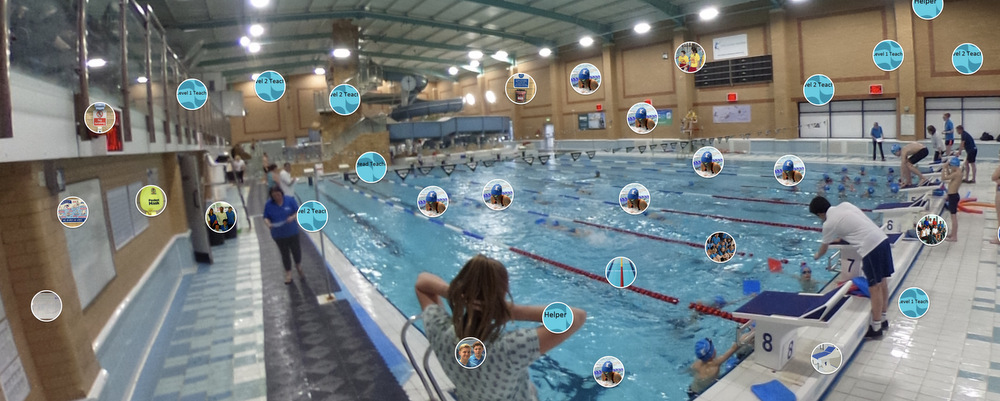
Developing the use of 360 images and tours with 'tags' for teaching and training
Everything I learnt completing the MA ODE from 2010-2013 indicated that creating e-learning elements, or as Jilly Salmon quaintly called them 'e-tivities' required time.
My experience is that educators lack this time
The time they have to teach is precious and taken. Therefore there is a role for the Learning Technologist as the enabler, who floats between the tutor or teacher, the course content and its objectives and the students. Compared to such roles in the commercial world, the Learning Designer comes to mind, the Learning Technologist is by and large a solo operator.
The role is evolving, as are the teams and our responses. Whilst invigorated by the chance to turn things around quickly and give them a go, my hope is that as learning technologists become more closely involved in longer term curriculum planning and preparation. Over time these 'e-tivities' will get greater investment in their creation.
In the above the use of 360 cameras have been used in a number of sports to provide classroom insight to second year BTEC Sports students. By exploring the environment they can both assess the quality and nature of teaching and coaching provision, and also do a risk assessment.
This blog might contain posts that are only visible to logged-in users, or where only logged-in users can comment. If you have an account on the system, please log in for full access.
